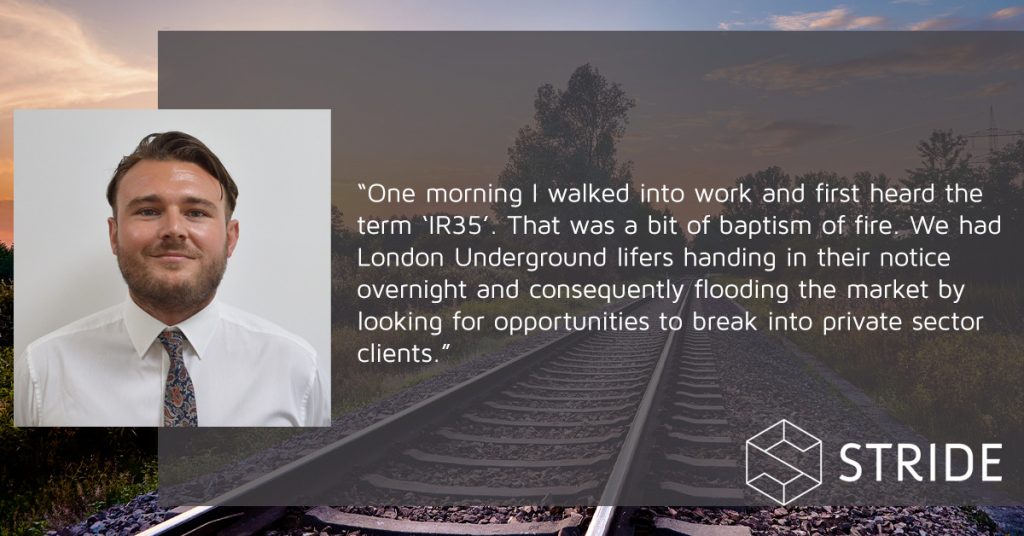- 16th November 2020
Featured article: An insight into the rail industry
After what I’m told have been the quietest years the Rail market has seen in decades, the recent news that HS2 has been given the green light has come as music to everyone’s ears.
Early talks of HS2
I started my venture into the sector back in 2016. Early talk of HS2 was gathering momentum, CP5 was winding down with lots of excitement around the CP6 frameworks and Crossrail was due for completion. What followed was years of turmoil and various obstacles for the government and industry to overcome. These came in many forms including Brexit, IR35 and more recently COVID-19. As with many Railway people I persevered can now see that light at the end of the tunnel we were all waiting for.
I recall my first conversations with those working within the industry late 2016 and hearing about the temporary lull that was taking place but could still detect excitement in their voices as they spoke of HS2. Crossrail was well underway and supposedly imminently due for completion. A few of the more seasoned Rail veterans were a little sceptical of this but my eyes and ears were focused solely on the positivity.
My introduction to IR35
One morning I walked into work and first heard the term ‘IR35’. That was a bit of baptism of fire. We had London Underground lifers handing in their notice overnight and consequently flooding the market by looking for opportunities to break into private sector clients. The Underground had been quiet for a while with Sadiq Khan putting a recruitment freeze on TFL, meaning that in light of IR35 they lost over 50% of their workforce with no real intention to replace them. This then caused serious repercussions to LU projects such as 4LM amongst others. Having to take an influx of calls from angry contractors about the new legislation did consume us for weeks and for me personally meant I quickly had to become an expert on the subject and find solutions to offer them in their masses.
TFL wasn’t the only one affected, of course, Crossrail themselves now faced a huge battle to retain their staff and lost many of them to their Tier 1 contractors. They eventually had to put a ban in place to stop this happening. What I quickly noticed from working with Crossrail was that to get people working for them or retain their staff they had to inflate their rates rather drastically to accommodate the national insurance and tax deductions. A £400 a day LTD contractor who was ushered inside of IR35 would be looking at taking home £240 a day in the public sector, whereas a move to a sub-contractor on the same project meant they were exempt and would take home what they had previously. That same £400 a day contractor would be looking to inflate their rate to £550/600 a day to counteract the changes. TFL wasn’t prepared to do this and held firm on their stance whereas Crossrail, already under fire for late delivery, had no other choice. I think it’s fair to say that this was a very difficult time for the market, which subsequently led to a series of other damaging events.
At the time, there wasn’t a project in the sector that Carillion didn’t have some part in. They were Network Rail’s contractor of choice and once again I walked into the office to hear unexpectedly of their dramatic fall from grace. Again what followed was thousands of contractors losing their jobs with nowhere to rehome them. It was devastating not only for their staff but the market in general as it highlighted how fragile it was at the time. Crossrail was having many difficulties, LU was still fighting the backlash of IR35 and those operating within the market were looking at opportunities abroad or moving to other sectors to avoid the uncertainty. Each day there was a fresh new challenge to overcome. HS2 and the excitement that had previously generated was dulled by disgruntled contractors angered by the hand they had been dealt by the industry they loved. Even those within the private sector knew IR35 was imminent for them and were looking for loopholes to avoid getting stung.
This article is the first of a 2-part series.


